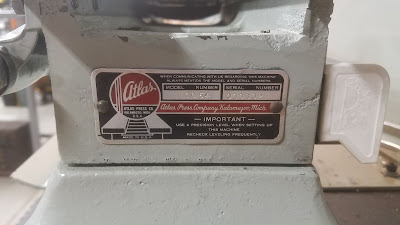Atlas Quickchange Lathe QC 54 Serial #302

We rescued an early production model of the Atlas Quickchange 54 from a basement in Northeast Portland earlier this year. With a swing of 10-1/4" over bed and 36" between centers, it required complete disassembly in order to get it up the very narrow stairs. The electric motor and the bench the lathe is mounted on are not original, but are very well constructed and integrated. Everything came apart fairly easily, and went back together without issue. It is in surprisingly good condition considering the humidity of the Pacific Northwest. While the ways have certainly seen use over the last 70 or so years, the critical surfaces have been maintained well, and show no signs of mistreatment. The repainting it received at some point has kept surface rust to a minimum and makes it look a lot newer than it is. The carriage, cross slide, and compund rest are all in fantastic condition. Some of the components have likely been replaced over time with OEM casti...
